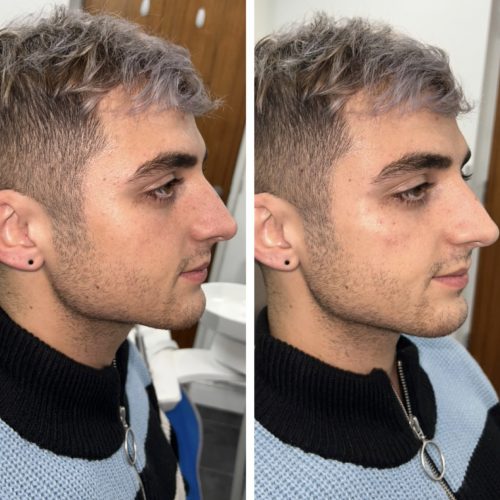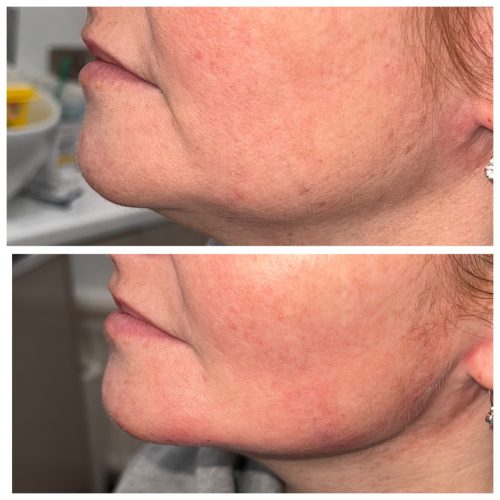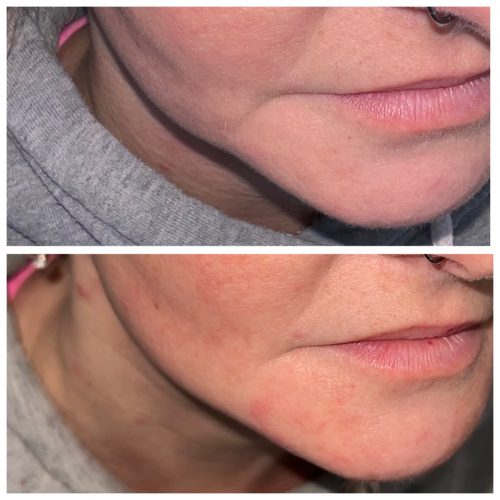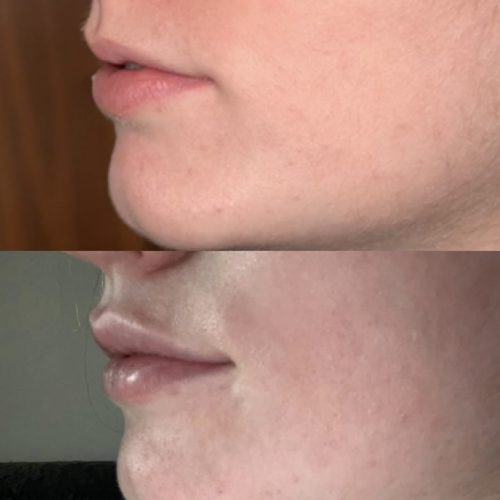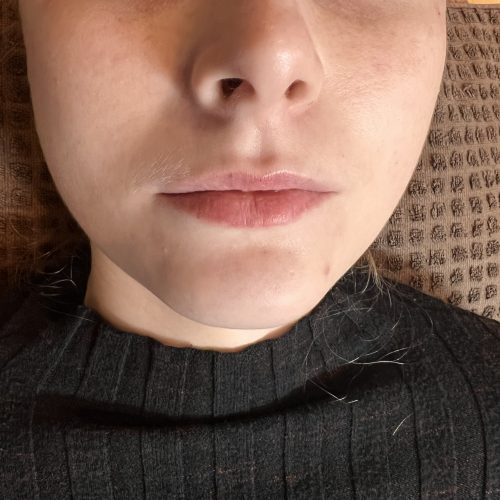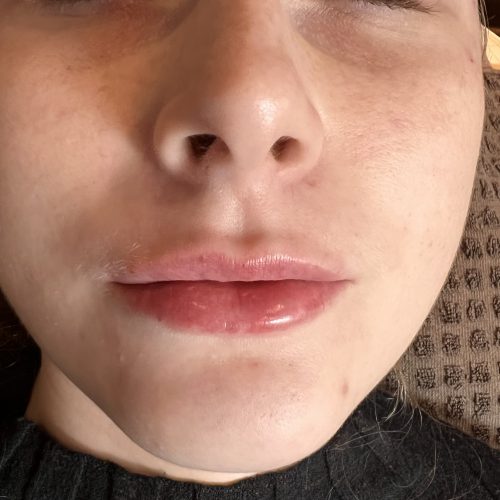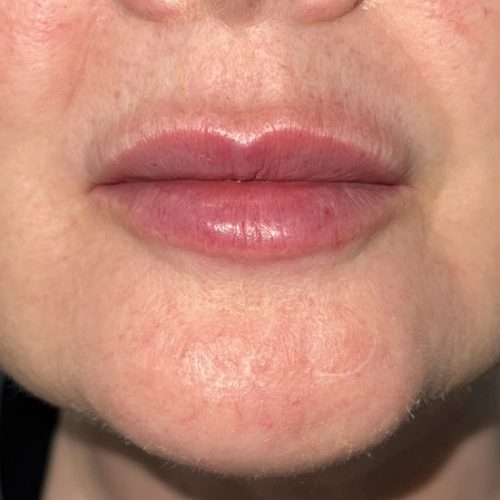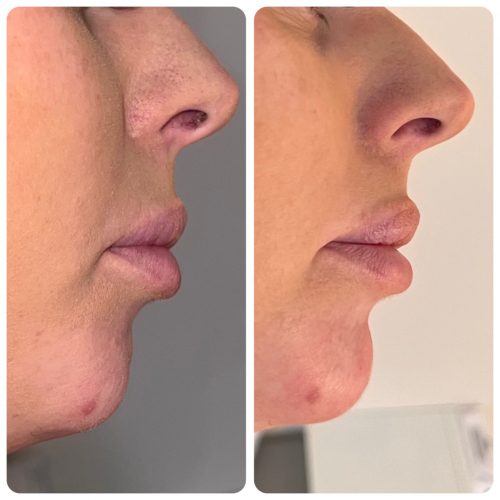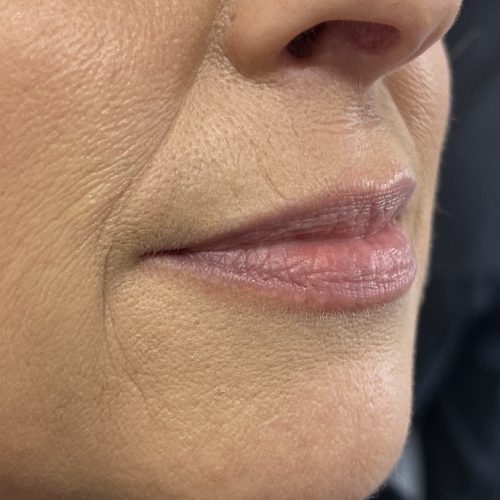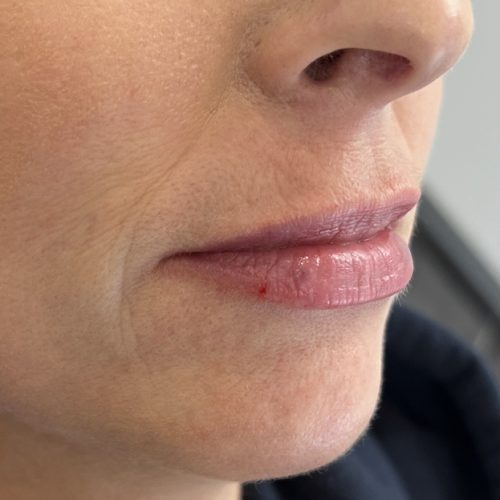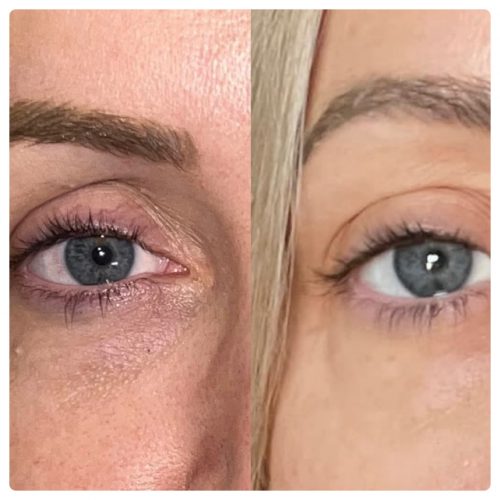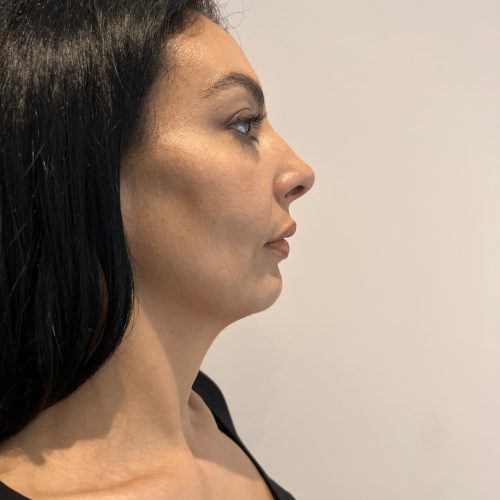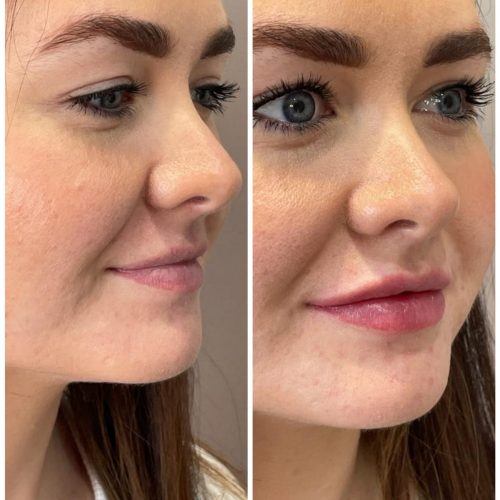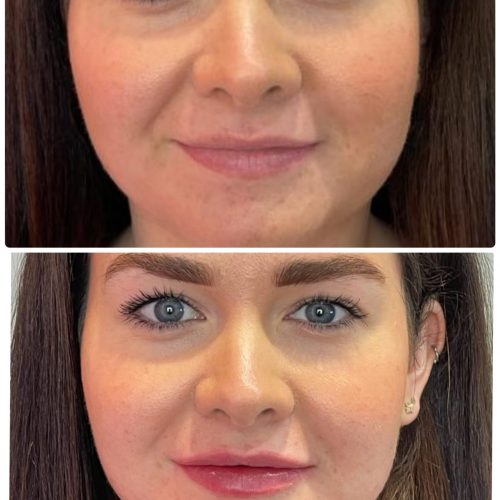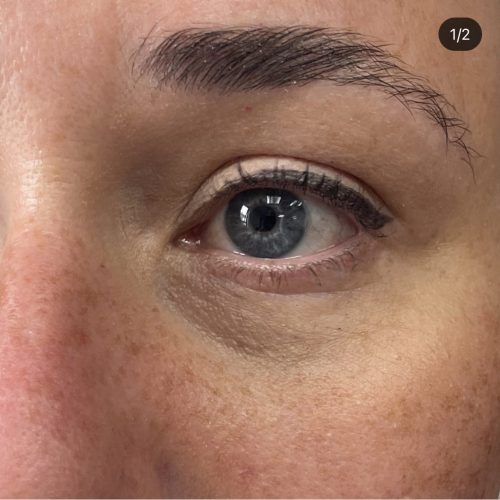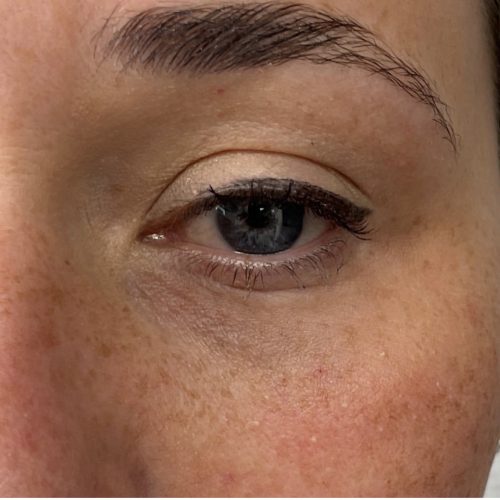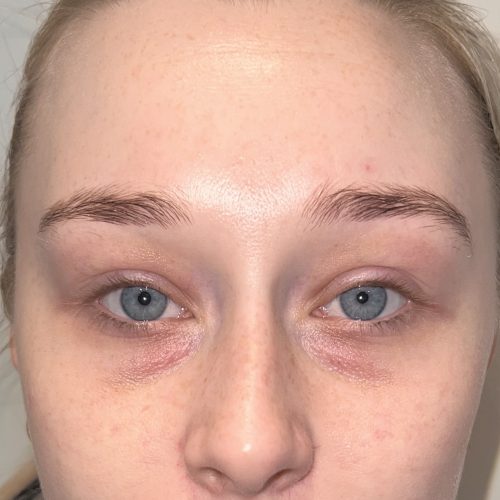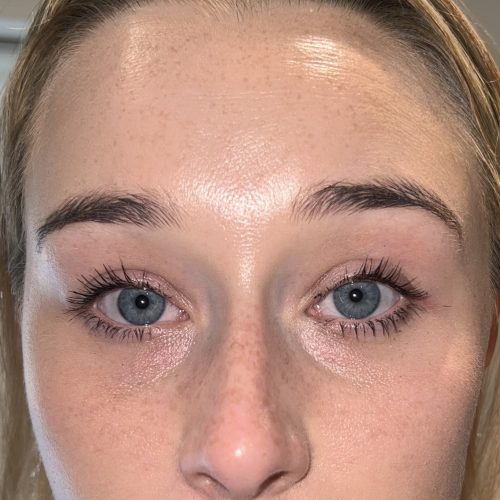
Dermal Filler
What are Dermal fillers?
Lip filler, cheek filler, and chin filler are a popular treatment at my Hillsborough clinic. Hyaluronic acid dermal fillers have been around for 20 years and the technology has become very sophisticated and versatile since its introduction.
From about the age of 25, the amount of collagen produced in our skin starts to decrease. When we reach our forties, collagen production comes to a majorly disappointing stand still – stopping altogether. The result of this is dry, sagging, dull skin. Coupled with this, comes another great contributor to visible signs of ageing – bone resorption. The mid face (cheek area) is affected most dramatically, which can leave us appearing tired and sunken.
Fillers can replace lost volume and thus lift or contour the face. With the right type of dermal filler, my aim is to subtly reproduce this lost volume and provide an age-appropriate rejuvenated look. When used in this way, Hyaluronic acid dermal filler can smooth unwanted facial wrinkles for a younger appearance.
Facial profile can be improved using dermal fillers. It is not uncommon for patients seeking lip filler or nose filler despite realising on side profile they have a small or large chin – they require profile balancing with chin filler. Treatment without full face appreciation can emphasise a profile imbalance. As a dentist with orthodontic training, I am trained to take a full-face approach with my treatment plans.
How do Dermal fillers work?
Dermal fillers boost the skin’s supply of hyaluronic acid. This injectable substance has a gel consistency made up of stabilised, non-animal hyaluronic acid, which is tissue-friendly and closely resembles the hyaluronic acid that exists naturally in your body. Treatment is comfortable as a numbing agent is applied to the skin before the treatment and most products contain some local anaesthesia. Dermal Fillers are long-lasting but not permanent with the result of a single filler treatment lasting for around 6 to 12 months.
What areas can be treated with Dermal filler?
– Nose to mouth lines (the nasolabial folds)
– Marionette lines (either side of the mouth)
– Smokers/Lipstick lines (around the mouth)
– Lip filler (adding volume and shape, or restoring lost hydration with age)
– Chin filler to shape, define and adjust the facial profile
– Nose filler to achieve a smoother, straight or lifted nose profile
– Under eye-hollows/tear trough which often becomes deeper with age and fat loss. Often treating the mid face with cheek filler lessens the need for this treatment
– Cheek filler for subtle beautification or to help plump areas where fat loss has occurred
– Jaw line filler which defines the jaw angle and softens the appearance of the jowl, may be combined with chin filler
– Smile lines that crinkle on the lower face as we age
For more info on Cheek fillers.
Dermal filler Frequently Asked Questions
What do Dermal fillers do for the skin?
Dermal fillers plump the skin from the inside out by replacing lost fat and proteins to smooth lines and wrinkles.
Dermal fillers replace lost volume so are used on static lines which remain visible on the face even when it’s relaxed and expressionless. Dynamic lines are visable on expression and are generally best treated with Botox.
Hyaluronic acid dermal fillers also have the advantage of being hydrophilic, that means they attract and retain water. This internal moisturiser attracts water and holds it in the tissues, helping fill out the skin, creating the perfect plumping effect.
What exactly is Dermal filler?
Dermal fillers can be made of various materials. The dermal fillers I use in my clinic are all made of hyaluronic acid.
This means they are closely matched to your own tissues and can be removed by dissolving if required. As hyaluronic acid is present in your own body the safety profile is high.
What type of Dermal fillers do you use?
I only use premium brand hyaluronic acid dermal fillers that I order through registered pharmacies in the UK.
The brands I use include Teoxane, Merz and Croma, nothing I wouldn’t have in my own face as a rule.
How long do fillers last in your face?
Dermal fillers made from hyaluronic acid vary in strength and the choice of product depends on your anatomy, the goal and technique I am using. I will use a different product for lip filler than chin filler or cheek filler, the injection techniques will also differ.
As a rough guide fillers will last between six and eighteen months, but that can vary between patients.
Everyday your body will carry out its own housekeeping of your tissues, this includes dissolving of your own hyaluronic acid. This same process will dissolve the dermal filler over time. In mobile areas of the face, the mechanical movement of the tissues will help speed up this breaking down process.
Are Dermal fillers permanent?
The dermal fillers I use in my clinic are hyaluronic acid based, they are therefore not permanent. While it is disappointing that treatment needs to be maintained, its actually a good thing!
Should anything to wrong, I have the ability to reverse the hyaluronic acid dermal fillers using an enzyme prescription only medication, called Hyaluronidase. This is ensures your safety during the treatment.
Are Dermal fillers safe?
Dermal fillers are generally safe, but they are best carried out by an experience medical professional. You should check that the professional doing thetreatment is on a medical register, experienced and insured. Prescribing medical professionals will have access to reversal prescription only medication, hyaluronidase should they need it.
The most common side effects are short lived and include redness at the site of the injections from the needle or cannula entry. Bruising is also possible and resolves after a few days.
Serious problems are thankfully very rare, but can include infection, poor result, blockage of a blood vessel causing tissue death and extremely blindness. Dr Janice has undertaken many complication courses and is supported by medical colleagues should assistance be required.
How painful are Dermal fillers?
The procedures of dermal fillers is a little bit uncomfortable, but they are worth it!
I used the safest techniques to ensure minimal pain. Topical numbing cream is applied to numb the skin prior to injection and most of the products include a local anaesthesia agent, Lidocaine to ensure the placement is comfortable.
Lip fillers are the most sensitive, due to the sensory nature of the lips. Cheek filler and chin filler is very well tolerated. Most people are surprised how comfortable and quick dermal filler is.
Where do Dermal fillers go?
Dermal fillers can be placed in various areas of the face including:
- Lip filler. The lips to restore or augment them
- Peri oral filler. Lipstick lines or smokers lines that form around the lips
- Cheeks filler to replace lost volume
- Nasio labial fold filler to reduce how deep this fold appears
- Chin filler to create the ideal facial profile and disguise a weak chin
- Marionette filler. Filler to the mouth corners to reduce the downturned appearance
- Jaw line filler to sharpen the angle of the jaw and soften the jowls
- Nose filler to smooth out bumps
- Tear trough filler to lift the hollows under the eyes in suitable cases. This is often combined with cheek filler for excellent results
- Smile lines filler to reduce the creasing that appears beside the mouth when you smile
When should I get Dermal fillers?
As we age collagen and elastin is lost from our skin, our facial fat pads loose volume and the bony skeleton of the face starts to resorb resulting in less support to the facial tissues. All great news!
These changes will happen at different rates depending on genetic and lifestyle factors.
Therefore the time to consider dermal fillers will vary.
Younger patients are inclined to be open to the idea of lip filler, but you must bear in mind not to go to far, the facial profile might not be suitable for a larger lip. Mature patients are quite often apprehensive about lip filler, but the results can be very natural with the right product and technique.
Is everyone suitable for Dermal fillers?
Dermal fillers are suitable for anyone who is in good health.
There are some conditions that may exclude you from the procedure. These include active infection in the area of concern, pregnancy, breastfeeding, allergy to any of the product contents or reversal medication. They should be used with caution in those with autoimmune conditions such as Lupus or rheumatoid arthritis.
Are Dermal fillers better than Botox?
I wouldn’t say that dermal fillers are better than Botox injections. Their purpose is different and they compliment each other.
Dermal fillers replace lost volume so are used on static lines which remain visible on the face even when it’s relaxed and expressionless. Dynamic lines are visable on expression and are generally best treated with Botox.
Does your face go back to normal after Dermal fillers?
Dermal fillers can be removed and your body will resorb them over time as it carries out its own housekeeping of your tissues.
If the amount of dermal filler is not excessive then your tissues will return to their normal, non filled shape. That said, if you have been having dermal fillers for a while and decide to have filler dissolved you may feel that the loss of volume is greater as it is difficult to remember your starting point.
Is there specific aftercare for Dermal fillers?
It will usually take a few days to weeks after dermal filler for the treatment to fully settle. You should expect redness, swelling and tenderness in the treated area. This is usually due to the needle or cannula insertion. If you are worried it is best to contact me directly.
There are a few precautions you should take following treatment:
- Avoid any heat inducing activities for 24-48 hours such as strenuous exercise, spas, saunas and hot showers.
- Avoid pressure on the area for the first 48 hours (no face down massages).
- Avoid alcohol for 24 hours
- Avoid active cosmeceutical products (AHAs, retinols, vitamin C) and oil-based makeup for 24 hours.
- Avoid touching the face too to avoid infection.
- Avoid facials, waxing, chemical peels, skin needling, microdermabrasion, IPL or laser treatments for 2 weeks after treatment.
- Do not massage the treatment area unless instructed to do so.
- Avoid any excessive kissing with fresh lip filler for the first 5 days, after that is up to you!


